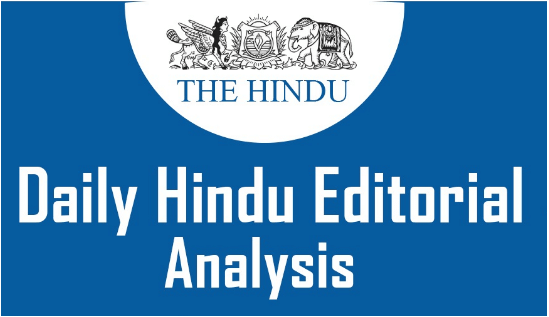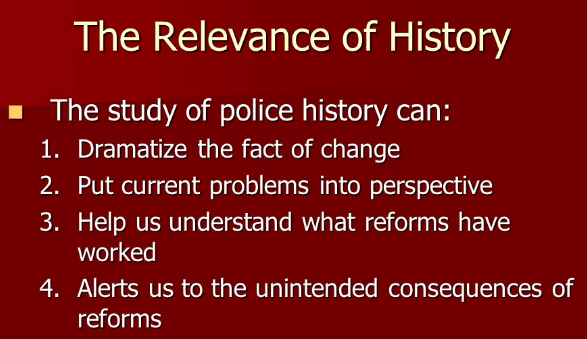The Hindu Editorial Analysis- 4th Sept, 2020 | Additional Study Material for UPSC PDF Download

1. PARTIAL RELIEF: ON AGR DUES-
GS 2- Important aspects of governance, transparency and accountability
Context
The Supreme Court’s decision this week to allow telecom service providers 10 years’ time to settle their adjusted gross revenue (AGR) dues to the government comes as a partial relief to the debt-laden(filled) industry.

Excessive
(i) This will give the older providers, especially Vodafone Idea, the crucial breathing space to figure out how they can reconfigure their business plans to stem(stop) the relentless flow of operational losses.
(ii) It will also give them space to garner(collect) the resources to make the sizeable annual payments to the Centre over the next decade.
(iii) However, in setting a time frame, the Court seemed to brush aside(ignore) both the companies’ requests for a longer horizon as well as the Centre’s well-deliberated recommendation for a 20-year repayment period, merely terming it “excessive”.
(iv) The government having realised the enormity(huge) of the problem and its potential for significantly disruptive consequences to not just the industry but the larger economy as a whole had thrashed out the matter at various levels, including within the Cabinet, before submitting its view.
(v) Without naming any company, the Centre had made clear that were the AGR dues to be sought at one go, it could well push a service provider into insolvency proceedings.
(vi) Such a turn could potentially impact millions of subscribers, with the surviving operators finding their capacities stretched to handle a sudden surge of mobile portability requests while simultaneously maintaining quality of service.
Threats Facing The Industry
(i) The Indian Banks’ Association (IBA) had also explained its position in seeking a judicious and non-disruptive outcome.
(ii) The IBA represented the various lenders, who have much at stake given that industry debt including that which is under resolution as part of the Insolvency and Bankruptcy Code process amounts to over ₹4-lakh crore.
(iii) The Court, in its order, did take cognisance(observation) of the multiple threats to the industry’s well-being:
(a) the depressed levels of average revenue per user;
(b) the fraught competitive landscape where a new entrant’s tariffs had triggered a price war hurting revenues;
(c) a surge in data usage even as the price of such data plans remained almost unviably low;
(iv) and an overall diminishing ability to continue to invest in capital spending for infrastructure upgradation and new technology including the upcoming adoption of 5G networks.
(v) Companies are yet to decide on whether to seek a curative review of the latest verdict.
(vi) The future of India’s ambitious dreams of enabling a pan-Indian digital ecosystem that seamlessly connects the remotest rural inhabitant with a plethora(series) of e-enabled services hinge(fixed) on ensuring the industry stays healthy and vibrant.
(vii) For that, the government needs to look beyond the AGR issue and reimagine the way it prices and seeks to monetise the precious yet immutable(fixed) public asset of radio spectrum in future.
Conclusion
AGR dues should not be allowed to impair(risk) customer-centric investments in telecom.
2. A POLITICS OF AVOIDANCE THAT MUST BE QUESTIONED-
GS 2- Important aspects of governance, transparency and accountability
Context
(i) We, the people of India, gave ourselves a Constitution that prescribes for our democracy a parliamentary form of government in which the executive is accountable to the electorate through a legislature which in turn is periodically elected by the electorate.
(ii) This accountability lies at the heart of democratic government.
(iii) It is implemented through procedures put in place by the legislature whose functions include lawmaking, controlling the national finances and approving taxation proposals, and having discussions on matters of public interest and concern.
(iv) Each of these functions is discharged, daily or periodically, during sittings of the legislature and cover questions, adjournment motion, calling attention, half-an-hour discussion, motion of no confidence, questions of privilege, etc.
Instruments Of Accountability
(i) Among these instruments of accountability, the daily ‘Question Hour’ has an unmatched criticality on account of its regularity and its availability on a basis of equality to every Member of the House, Rajya Sabha or Lok Sabha.
(ii) It has a special significance in the proceedings of Parliament since it covers every aspect of government activity, domestic and foreign.
(iii) The government of the day is thus helped to feel the pulse of the nation and give the public a view of the performance of both of its elected representatives and of the Ministers.
(iv) Those who fumble(make mistake) are rarely forgotten.
(v) The Rules of Procedure in both Houses prescribe the operational details.
(vi) These include, inter alia, the notice period, conditions of admissibility, balloting, and a host of other procedural or regulatory prescriptions.
(vii) Questions are addressed to a specific Minister of the government and can seek oral answers marked by an asterisk(symbol) or a written one.
(viii) The veracity(truthfulness) of the answers given are matters of utmost importance and rules permit correction of inaccuracies by the Minister concerned.
(ix) Copies of answers given are available to Members at the Notice Office before the start of the day’s proceedings as also on the websites.
Seeking The Specifics
(i) Since questions are generally ‘pointed, specific and confined to one issue only’, they tend to elicit specific information from the government; our parliamentary history records instances of answers given to questions leading to wider debates, inquiries, and even administrative scandals.
(ii) Even otherwise the information so made available adds to public information essential to informed debates on matters of interest or concern.
(iii) The advantage to the government is that its position in the matter is authoritatively explained.
(iv) By the same logic, incomplete or unsatisfactory answers induce resort to other forms of accountability mentioned above.
(v) For this reason, Members of Parliament and the interested citizens attach much importance to questions in Parliament and have been taken aback by the peremptory announcement in parliamentary bulletins this week that in the forthcoming session of Parliament (monsoon session that starts on September 14) that ‘there will be no Question Hour.’
(vi) The stated reason for this is the situation created by the COVID-19 pandemic.
Citing The Pandemic Is Jarring
(i) The gravity of the situation resulting from the spread of COVID-19 continues to be experienced by people the world over and by every citizen of the country.
(ii) New disciplines have descended on us and we have experienced new norms and styles of existence, learnt to live with total and partial lockdowns, and have moved from no activity to partial restoration of essential activities.
(iii) Procedures of social distancing and the wearing of protective masks have been imbibed.
(iv) Countries far and near have brought forth their individual response patterns; some of these show that legislative bodies have continued to function with new sets of ‘dos and don’ts’.
(v) Finally, though belatedly, some of our State Assemblies took the initiative and now the Parliament of India has followed suit. The public has welcomed this.
(vi) In this context, the deletion of ‘Question Hour’ from the announced agenda of the day is baffling(confusing) and has understandingly been viewed as curtailment of the right to question the government.
(vii) Subsequent clarifications have stated that the Unstarred Questions will continue to be received and answered and that the change will relate only to Starred Questions and the Supplementary questions emanating(arising) from them that require to be answered orally.
Exploring Options
(i) The purpose of a Starred Question is to explore the intent and the alleged illegality or procedural lacuna(gap) that the government decision in question has sought to camouflage(hide) in the form of words and expressions used in the answer.
(ii) The Oral Supplementary questions seek to unravel(solve) these. It is a form of verbal gymnastics not unknown in daily life.
(iii) Perhaps greater sensitivity to parliamentary and public sentiments could have been displayed by exploring procedural options that would retain the substance if not the complete form of a Starred Question.
(iv) One way could be to admit the Starred Question, reply to it in a set of prepositions and allow the Member concerned to table in writing the permitted number of follow up questions also to be answered in writing the following day.
(v) Were these options explored and discussed with leaders of political parties and groups?
(vi) The Chairman and the Speaker unquestionably have the final word on matters relating to the proceedings of their respective Houses.
(vii) This can be, and has been supplemented, on occasions, by using a Motion to develop a consensus ‘on matters of general public interest’.
(viii) Was this explored on this occasion?
(ix) And, finally, what public purpose is served when senior members of the ruling party describe the Opposition expression of concern as ‘a fake narrative’ since ‘extraordinary times justify extraordinary measures?’
Conclusion
(i) The test of a functioning democracy is its ability to face crises — social, economic, political — and seek correctives premised on institutions of democracy.
(ii) A resort to what has been called ‘the politics of avoidance’ does not help the process.
(iii) Executive accountability upfront cannot be allowed to become a thing of the past.
3. TOWARDS INCLUSIVE SYLLABI-
GS 2- Issues relating to development and management of Social Sector/Services relating to Education
Context
(i) Few professionals earn their living by applying lessons from Indian history to human behaviour.
(ii) Most people tell that they found history irrelevant and boring in school. Others liked it because their teacher was a great storyteller.
(iii) But has it helped them in understanding their identity better, or in not repeating mistakes made in the past? Most often not.

Bridging The Divide
(i) How history can be taught differently is one conversation, and how the content can enable that is another.
(ii) Scanning through the CBSE Class 7 textbook, a north-south divide is evident(obvious).
(iii) Students in India are required to study the Delhi Sultanate and the Mughal empire, and six out of 12 chapters are dedicated to them.
(iv) For the rest of the country, there is just about half a chapter on the Vijayanagara empire.
(v) So, if we don’t get into what should not be included, let us consider what can be.
(vi) We must do this also in the context of the history syllabi for the higher classes, since every aspect of the subject cannot be taught in Class 7 alone. The Northeast is ignored in the curriculum.
(vii) A chapter on the Ahoms (or Tai-Ahom), and the oral history of other ethnic groups will make us, the “mainstream Indians”, more educated about an important part of India.
(viii) Oral traditions can also open up exciting discussions in the classroom on what historians consider “valid proof” in historical research.
(ix) African, South American and Asian traditions have long considered oral traditions valid proofs, whereas the western tradition considers what is in a book more truthful.
(x) Given the founding mandate of the CBSE, it will always be nationally focussed.
(xi) However, with more parents opting for CBSE rather than State Board schools, the former, today, is broad-based. At least for this new avatar, it can re-examine its syllabus.
(xii) Perhaps we can start with history that is closer to the child, rather than the farthest away, and hence abstract.
(xiii) Or we could start with local history and subsequently move to State, national and international histories, over the many years children learn the subject.
Focussed Changes
(i) If those are the major changes, can incremental changes be made? Could chapters be different for each State?
(ii) Children in Tamil Nadu know nothing of the Pandya dynasty that promoted Tamil, and which was also one of the longest-ruling dynasties in India, besides the Cholas and other famous empires of classical India.
(iii) Kerala could have chapters about the Kulasekhara (who had a state-of-the-art observatory), Andhra Pradesh the Kakatiyas, and so on.
(iv) A chapter on cultural history in medieval times, about what people ate, how they dressed, the nuances of irrigation, land cultivation, how they resolved fights and what games they played, would be fascinating for 11 to 12-year-olds.
(v) Perhaps a local history project could be implemented if the region has medieval remains.
(vi) At a time when the issue of Hindi imposition is gaining weight, a chapter on literature across the States of that time may work.
(vii) Languages have much more than just religious verses — there are dramas, fun poems with onomatopoeia, word puzzles, or entire books where every stanza is a palindrome.
Onomatopoeia- the formation of a word from a sound associated with what is named (e.g. cuckoo, sizzle)
palindrome - a word, phrase, or sequence that reads the same backwards as forwards, e.g. madam or nurses run.
(i) Teachers in CBSE schools are fired up much more by the passion to better the lives of children than the salary they earn.
(ii) They work long hours and teach multiple classes, in addition to doing administrative work.
(iii) The volume of north Indian content in the book will not help increase their passion, as teaching something that stoked their own passion for history would.
(iv) If there can be an option of two, or even three chapters, aided by the reliable information we have on the Internet today.
Conclusion
(i) We can have more representative content for medieval Indian history, rather than something that means little to those outside Delhi.
(ii) History should help children increase their sense of identity. One hopes there will be a re-examination soon.
|
21 videos|562 docs|160 tests
|
FAQs on The Hindu Editorial Analysis- 4th Sept, 2020 - Additional Study Material for UPSC
| 1. What is the significance of UPSC in the Indian context? |  |
| 2. What is the Civil Services Examination conducted by UPSC? |  |
| 3. How can one prepare for the UPSC Civil Services Examination effectively? |  |
| 4. What are the eligibility criteria for appearing in the UPSC Civil Services Examination? |  |
| 5. What is the selection process for the UPSC Civil Services Examination? |  |





















